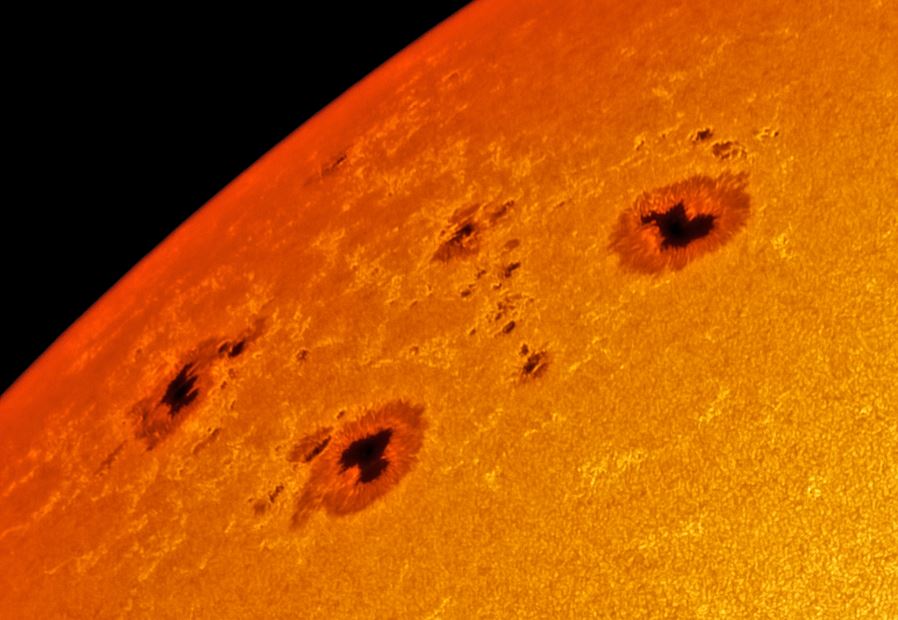Sun Unleashes Solar Storms: Massive Sunspot Region Sparks Coronal Mass Ejections and Geomagnetic Activity

A colossal sunspot region, spanning over 125,000 miles and more than 15 times wider than Earth, has unleashed solar storms, including 16 C-class and 3 M-class solar flares in the last four days, triggering numerous coronal mass ejections. (Photo: livescience)
Intense Solar Activity: Massive Sunspot Region Sparks Solar Storms and Coronal Mass Ejections
According to source, a colossal sunspot region, composed of at least six distinct sunspot groups, has emerged on the sun’s nearside, marking one of the largest and most densely populated sunspot regions witnessed in over a decade. This massive collection of sunspots, spanning over 125,000 miles (200,000 kilometers) across, is more than 15 times wider than Earth. Since its emergence, the sunspot region has unleashed a series of solar storms, including at least 16 C-class and 3 M-class solar flares in the last four days, triggering numerous coronal mass ejections.
The sunspots have given rise to a “solar archipelago” as they split up and generated new dark patches. Astronomers had anticipated their arrival by tracking “helioseismic tremors,” disturbances in the sun’s surface, signaling the sunspot groups’ approach. The sheer size of the sunspot region has influenced the entire sun’s vibrations, amplifying the potential for more coronal mass ejections. Additionally, the emergence of large loops of plasma, solar prominences, above some sunspots could lead to spectacular events, such as enormous “canyons of fire” forming on the sun’s surface, accompanied by the release of coronal mass ejections.
With the sunspots already producing powerful solar flares, scientists anticipate the potential for more in the coming weeks, including the strongest type, X-class flares, possibly accompanied by multiple coronal mass ejections.
READ ALSO: IRS Announcement: Changes To The Tax Code 2024
Solar Dynamics Unleash Coronal Mass Ejections: Astronomers Anticipate Spectacular Displays as Sun Approaches Solar Maximum
The solar flares might also result in coronal mass ejections (CMEs), massive releases of charged solar particles, which, upon reaching Earth, could trigger geomagnetic storms, causing radio blackouts and vibrant aurora displays. Moreover, these coronal mass ejections contribute to the dynamic solar activity, adding an extra layer of unpredictability to the evolving conditions.
Meanwhile, three sunspot groups have surfaced on the sun’s southern hemisphere, signaling the sun’s progression toward the explosive peak of its 11-year solar cycle, known as the solar maximum, predicted to commence next year.
Astronomers and space enthusiasts are closely monitoring this significant sunspot activity, with meteorologist and aurora photographer Chris Wicklund expressing anticipation for an intriguing period in the next 14 days, during which additional coronal mass ejections may occur. The evolving solar conditions highlight the dynamic and unpredictable nature of our sun as it approaches the climax of its solar cycle.
READ ALSO: Red Flag Warning Prompts Closure of Great Smoky Mountains National Park Roads and Campgrounds
























